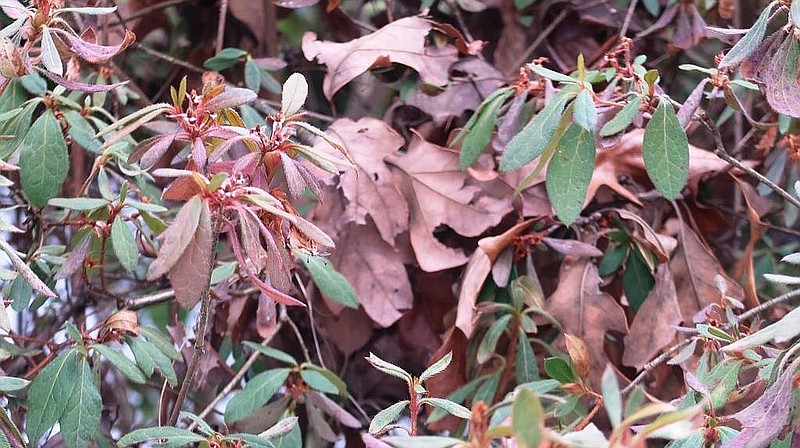The question on every gardener’s mind is “how much damage do I have on my plants?”
Nurseries, horticulturists, and universities across the south are all putting out information to answer this question. The main similarity in the responses will be, we don’t know for sure how much damage there is. Record low temperatures this late in the season will have taken their toll. For some of us, a heavy snow load will have helped—the snow actually protected plants beneath the snow line. Some parts of the south got the cold, but limited snow, so they will have more damage.
The reason for the uncertainty is that every situation is different. The hardiness of the plant, how much the plant was growing, how open or protected the site was, the health of the plant, etc. Some plants look awful with all burned leaves or mushy foliage. Some have tips that are brown, but the rest of the plant looks fine.

Some plants have no damage, and some plants may look fine but still have damaged buds. The only thing we as gardeners can do is be patient and wait to see what happens when the plants begin to grow. There is nothing any of us can do to speed up the process or improve the outcome—we just have to wait for the plants to start growing and assess the remedy. In some cases, it may just be burned leaves, and when new foliage comes on, it will push off the damaged leaves. Some will have dead stems, and some plants may have died to the soil line. Roots are much hardier than top-growth, and they are protected by the soil. The fact that we had so much snow, means they were doubly insulated, so that should also help. In areas where they had no snow, the soil may have frozen deeper than normal in the south, and they may have dead plants.
Once plants begin to grow, assessing them for replacement or recovery will be your call. Severely damaged plants will not bounce back in a week or two—it will take time. Fruit crops will have varying degrees of damage based again on the crop and their stage of growth. With fruit trees, you can have 90% damage of flowers and still harvest a crop, so keep your fingers crossed. My blueberries look fine, but many of the flower buds were full and plump before the cold hit,

so I am expecting a smaller crop this year. Strawberries were protected by the snow, and for the most part look ok. Again, time will tell.
The plants that seem to be showing the most damage in central Arkansas are: loropetalum,

gardenia, abelia, wax leaf Ligustrum, pineapple guava, confederate jasmine, palms, Soft Caress mahonia, and Distylium. Azaleas have varying degrees of damage based on the variety, and the same with camellias. I have no damage on any of the leaves, but did lose some flowers. Most surprising to me are nandinas. I have some that look awful and some with no damage. I have 5 varieties of loropetalum and the green leafed variety has no damage, while the purple foliaged ones vary tremendously. I saw a dwarf one that was totally covered by snow that came through fine,

while others look much worse. Everyone is wondering about big leaf hydrangeas and figs. I took off a bud from my hydrangea and it was brown on the outside, but still green underneath, so who knows—stranger things have happened. Wait and see what starts growing and where before cutting.
I have heard recommendations to scratch the outer bark looking for green. I have too many plants and better things to do with my time. I have also had gardeners that have cut everything back already, and some have started pulling things out. I want to give the plants a chance to shine, so I can do this work later if needed. A few brown leaves don’t bother me—I can just look somewhere else.
The winter storm of 2021 will be talked about for years, and at least for this growing season, we will have plenty of reminders in our gardens.
